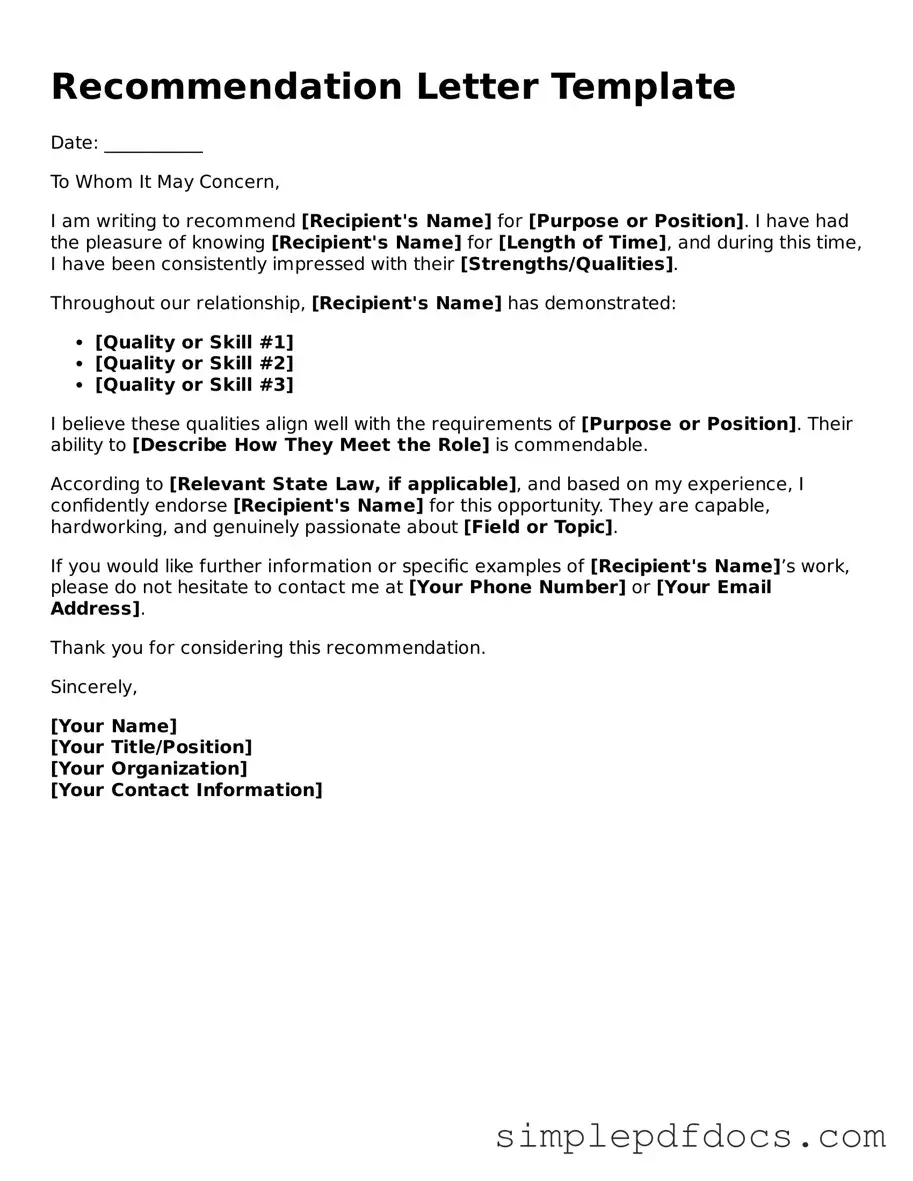Attorney-Approved Recommendation Letter Form
A Recommendation Letter form is a document used to provide a written endorsement of an individual's skills, character, and qualifications. Often requested by employers, educational institutions, or professional organizations, this letter serves as a crucial tool in helping someone achieve their goals. It highlights the strengths and experiences of the individual, offering insight into their potential for success.
Get Document Here
